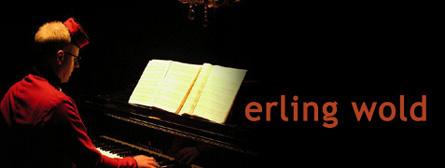In 1921 Diaghilev decided to make his contribution to the socializing of the arts. He rented the Gaieté Lyrique, a small theatre in the workers' district of Paris and managed - through publicity in the neighborhood - to attract the local residents into a theatre which put on mostly operettas. That succeeded nicely. After a few performances, the hall was filled with an entirely different audience from the mundane, chic people who usually attended the Ballets Russes. One evening the wealthy Misia Sert came to a performance. When she arrived at her box, she directed her binoculars into the crowded hall, saw no one well known - only unshaven faces - and said, surprised: `There's nobody here!'But of more interest to us composers are the composerly essays, for the book is really a collection of such, which bring us to desire that more books about composers be written by more composers. Yes, Kyle, your new book is on my to-be-read shelf, unfortunately a linear foot or two in, so be patient. It is such a joy to see the compositional and life knowledge the two authors have accumulated brought to bear on the subject, and the fact that they themselves have had to deal with so many of the same issues, and were influenced in their own compositions and the way they perceive the music that preceded them by the choices that Igor made, adds so much to the cross-generational discussion between composers living and dead.
An example is their brilliant clarification of the prescient nature of the Stravinsky's work, the change-without-change that presages minimalism, the form that follows from the music, the collage cutting back and forth. I've always been aware of the things in some way, ever since hearing Petrushka as a teen, and it's clear that it has informed everything I do, but why was not until this that I really got it?
A thirteen-year-old is capable, while lying in bed ready for sleep, of playing the Schumann Piano Concerto (in A minor) on the record-player of his memory. During the second movement, he will probably fall asleep. If, ten years later, in another bedroom, he tries the same thing with the Stravinsky Concerto for Piano and Wind (`in A minor'), he will, at the very most, if he even gets that far, get stuck at the cadenza of the first movement; or worse, get trapped in a vicious circle of dove-tailing rhythms and snake-like motifs biting at their own tails.This is in fact what I love in the music that I love. I now see that the piece I'm currently tidying up, my Walking along the Embarcadero past pier 7 and the flowers, owes much to my youthful inoculation with Stravinsky's music, which I didn't see so clearly before. And more revelations lie ahead.






No comments:
Post a Comment